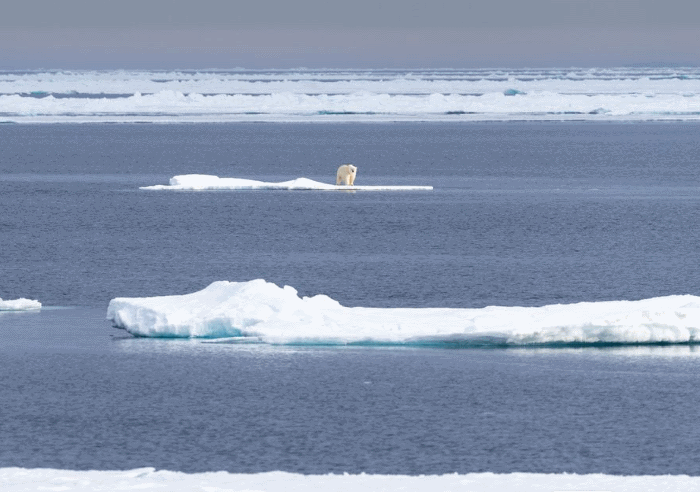We have gathered some of the most amazing and unbelievable polar bear cubs facts which you probably don’t know. Just to let you know that all these facts about baby polar bears are real. Although polar bears are one of the largest land carnivores in the world yet baby polar bears are only the size of a ground squirrel when they are born. However they will grow pretty fast in the first couple of months. Let’s take a look at the baby polar bear facts.
Polar Bear Cubs Facts
Polar Bear Cubs have Fluffy Furs
The cubs are well protected with fluffy white fur even when they are only weeks old. While polar bear cubs can survive the frigid arctic weather they are most likely suffer from hypothermia if they get wet. Therefore, mother bear doesn’t encourage her cubs to swim longer distances.
Polar Bear Cubs can Climb Trees
Believe it or not, baby polar bears can climb trees. Although there are very few trees in the Arctic but when a polar bear family gets close to the trees, the cubs often climb up the trees during playing. Adult male or a female bear cannot climb for they are too heavy to lift their weight.
Polar Bear Cubs Mimic their Mother
Baby polar bears are often seen mimicking their mother, it’s like monkey see monkey do. They will try to drink water, eat food, or stretch in a way their mothers do. The cub’s mimicking habits probably makes easy for their mother to teach them hunting techniques.
Polar Bear Cubs are Curious
Baby polar bears are highly curious especially in the first six months. They will wander far from mom and each day they likely bring about a bit more independence. However, cubs rarely go too far from their den and also their mother mostly keeps a close eye on them.
Polar Bear Cubs’ Weight
The average weight of captive polar bear cubs is somewhere in between 570 grams and 750 grams (1.2 to 1.6 lbs) at birth. In the wild habitat, they often hardly weigh more than a pound at birth. However, they will attain 7.7 pounds in just 30 days after birth.
Polar Bear Cubs Stay Inside the Den
They will stay inside the den for as long as 60 days after birth. While maternity den the polar bear cubs not only stay safe from predators, they also get warm. Once they reach 2-months age, they will leave the den. By the time baby polar bears leave their dens, they weigh 10 – 15 kg (22 – 33 pounds).
Polar Bear Cubs are Born Blind
Baby polar bears are completely helpless and they are blind at birth. They are highly vulnerable to potential predators at this stage. Arctic foxes usually hunt baby polar bears inside the den.
